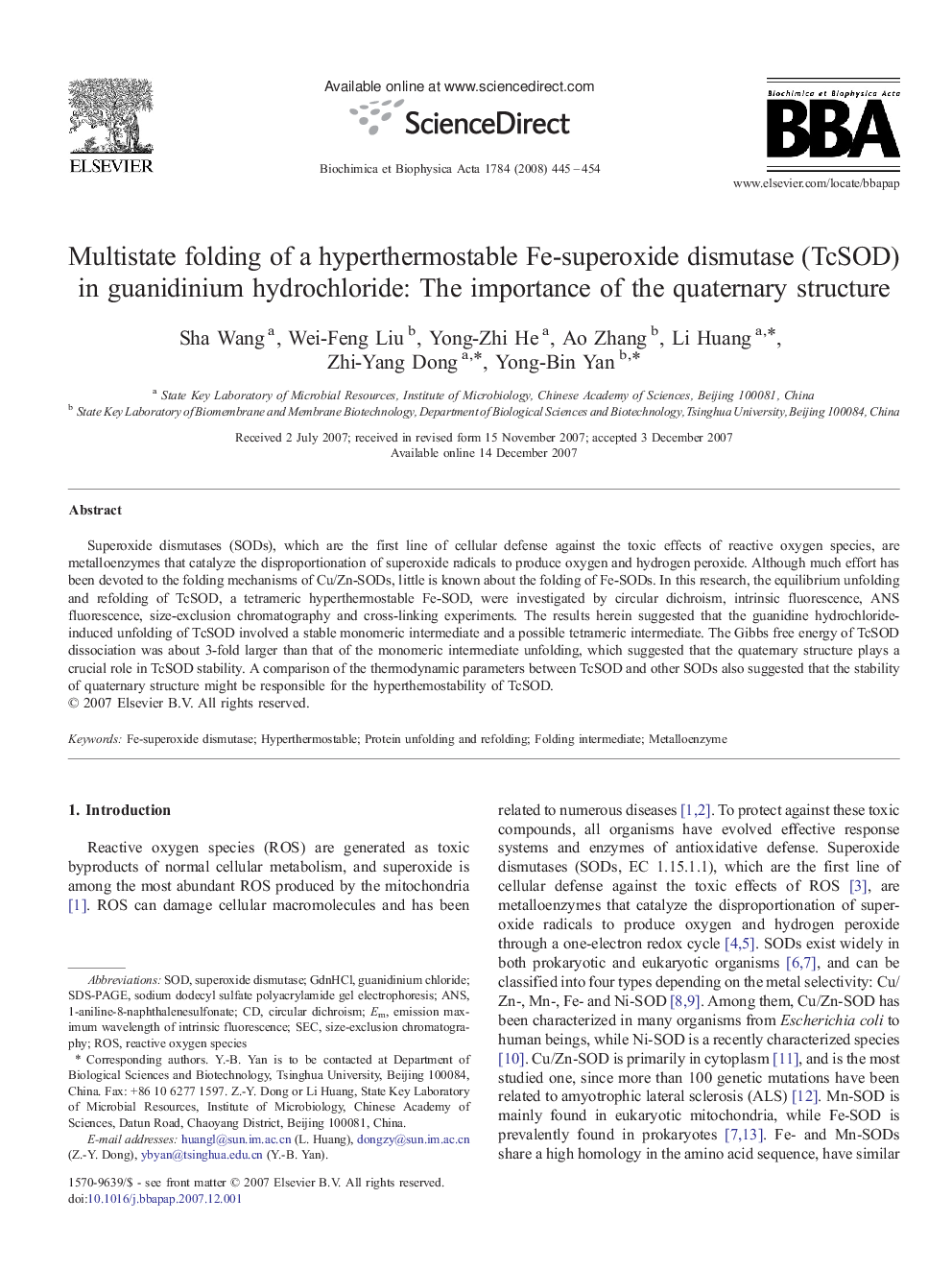| Article ID | Journal | Published Year | Pages | File Type |
|---|---|---|---|---|
| 1179115 | Biochimica et Biophysica Acta (BBA) - Proteins and Proteomics | 2008 | 10 Pages |
Superoxide dismutases (SODs), which are the first line of cellular defense against the toxic effects of reactive oxygen species, are metalloenzymes that catalyze the disproportionation of superoxide radicals to produce oxygen and hydrogen peroxide. Although much effort has been devoted to the folding mechanisms of Cu/Zn-SODs, little is known about the folding of Fe-SODs. In this research, the equilibrium unfolding and refolding of TcSOD, a tetrameric hyperthermostable Fe-SOD, were investigated by circular dichroism, intrinsic fluorescence, ANS fluorescence, size-exclusion chromatography and cross-linking experiments. The results herein suggested that the guanidine hydrochloride-induced unfolding of TcSOD involved a stable monomeric intermediate and a possible tetrameric intermediate. The Gibbs free energy of TcSOD dissociation was about 3-fold larger than that of the monomeric intermediate unfolding, which suggested that the quaternary structure plays a crucial role in TcSOD stability. A comparison of the thermodynamic parameters between TcSOD and other SODs also suggested that the stability of quaternary structure might be responsible for the hyperthemostability of TcSOD.
